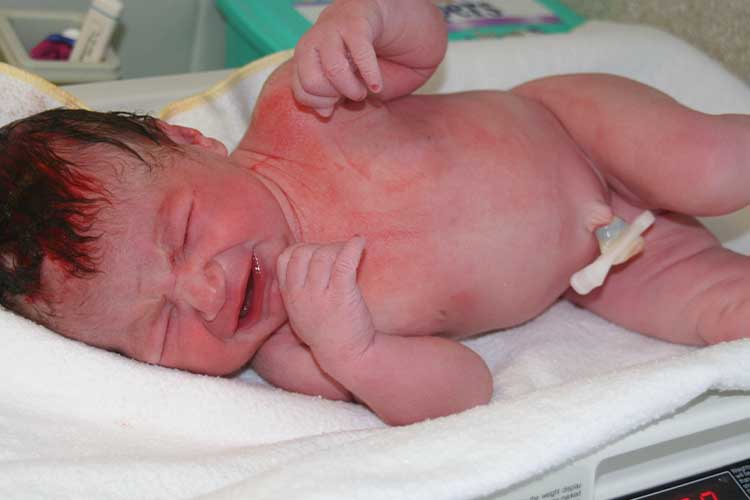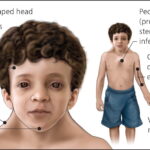Children born small for gestational age (SGA) are those whose birth weight is below the 10th percentile for their gestational age. This means that their size at birth is smaller than expected for the number of weeks they have been in the womb. It is important to understand that being born SGA can be caused by various factors, including maternal health conditions, placental problems, or genetic factors. While some SGA children will catch up in growth and development, others may experience short stature, which can persist into childhood and adolescence.
In this comprehensive article, we will explore the causes and implications of short stature in children born small for gestational age, the factors affecting their growth, and the treatment options available to improve growth outcomes

The Causes of Short Stature in SGA Children
Maternal Factors
Several maternal factors can contribute to a child being born small for gestational age. These include:
- Maternal hypertension or pre-eclampsia can restrict blood flow to the placenta, limiting the nutrients and oxygen available to the baby.
- Smoking, alcohol consumption, or drug use during pregnancy can adversely affect fetal growth.
- Maternal diabetes, particularly when poorly controlled, can lead to complications such as intrauterine growth restriction (IUGR), resulting in a baby being born smaller than expected.
Placental Insufficiency
Placental insufficiency occurs when the placenta is unable to provide enough nutrients and oxygen to the fetus. This can result in intrauterine growth restriction (IUGR), where the fetus does not grow at the expected rate during pregnancy. Children born with IUGR are often SGA and may be at higher risk for developing short stature after birth.
Genetic Factors
Genetic factors can also play a significant role in determining a child’s growth pattern. Children born SGA may have a genetic predisposition to shorter stature, especially if short stature is present in their family history. It is essential to differentiate between genetically small children and those who experience growth restrictions due to other factors.
Growth Patterns in SGA Children
Early Life and Catch-Up Growth
Many SGA children experience catch-up growth during the first two years of life, where they grow at an accelerated rate and achieve normal height for their age. However, not all SGA children will exhibit this catch-up growth. In some cases, particularly if the underlying causes are more severe, growth delays can continue beyond infancy and childhood.
For those who experience catch-up growth, it is often limited, and the child may still remain shorter than their peers, particularly if they were SGA due to factors like placental insufficiency or maternal health issues. These children may exhibit a pattern of growth that falls within the normal range for their age, but they may never fully achieve their genetic growth potential.
Persistent Short Stature
Some children born SGA may not experience significant catch-up growth. These children may show persistent short stature that continues through childhood and into adolescence. Factors contributing to this may include:
- Chronic nutritional deficiencies during infancy
- Hormonal imbalances, including insufficient growth hormone production
- Genetic predisposition for shorter stature
For children with persistent short stature, it is crucial to assess their growth trajectory and underlying causes to determine appropriate treatment options.
Short Stature in SGA Children: Diagnosis and Monitoring
Growth Charts and Monitoring
The first step in diagnosing short stature in SGA children is to regularly monitor their growth using growth charts. Growth charts help healthcare providers track a child’s height and weight over time, comparing these measurements to typical growth patterns for their age and sex. SGA children may initially be tracked on different growth curves, but as they grow, it becomes essential to monitor their progress against standard pediatric growth charts to assess whether they are following a normal growth trajectory.
Hormonal Assessments
In some cases, hormonal imbalances may be contributing to short stature. Growth hormone levels, thyroid function, and other key hormones should be assessed to determine if there is an underlying issue affecting growth. Growth hormone deficiency can be identified through specialized tests, and if found, treatment options can be discussed with the child’s healthcare team.
Bone Age Assessment
A bone age assessment can help determine whether a child’s skeletal development aligns with their chronological age. In children with short stature due to being born SGA, the bone age may be delayed, indicating that the child’s growth plates are still open and further growth may be possible.
Treatment Options for Short Stature in SGA Children
1. Growth Hormone Therapy
For children with persistent short stature due to being born SGA, growth hormone therapy is one of the most effective treatments. Growth hormone is a naturally occurring hormone produced by the pituitary gland that stimulates growth and development. In children born SGA, growth hormone therapy can help to stimulate growth and improve height outcomes.
Studies have shown that growth hormone therapy can help SGA children achieve better growth velocity and increased final adult height. The treatment is typically administered via daily injections and requires long-term monitoring by a pediatric endocrinologist.
2. Nutritional Support
Ensuring proper nutrition is essential for the growth and development of all children, but it is especially important for those born SGA. Children who are born small may face feeding difficulties or have nutritional deficiencies that affect their growth. A well-balanced diet rich in calories, proteins, vitamins, and minerals is necessary to support optimal growth.
In some cases, a nutritional intervention may be required, including the use of supplements to ensure the child is receiving adequate nutrition for growth.
3. Monitoring for Underlying Conditions
For some children, short stature may be a result of other underlying conditions such as hypothyroidism, chronic illnesses, or genetic syndromes. It is important to rule out these conditions through appropriate medical evaluations and treat any identified issues to support the child’s growth.
4. Psychological Support
Short stature can have psychological effects on children, particularly if their height is significantly below average. Offering psychological support through counseling or therapy may help children cope with any feelings of inadequacy or self-esteem issues related to their size.
Prognosis and Long-Term Outlook
The prognosis for SGA children with short stature varies based on the severity of their condition, the underlying causes, and the treatment interventions employed. Many children with SGA experience catch-up growth and eventually attain a height within the normal range for their age. However, others may continue to experience short stature throughout childhood and adolescence.
With appropriate treatment, including growth hormone therapy, nutritional support, and ongoing medical monitoring, SGA children with short stature can achieve significant improvements in growth. Early intervention is key to ensuring the best possible outcomes for these children.
Short stature in children born small for gestational age is a complex issue influenced by various factors, including genetic, environmental, and medical conditions. While many SGA children experience catch-up growth, others may face persistent growth delays and short stature. Early diagnosis, regular monitoring, and appropriate treatment options, including growth hormone therapy, can help improve growth outcomes and enhance the quality of life for these children.

